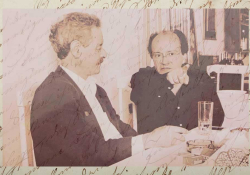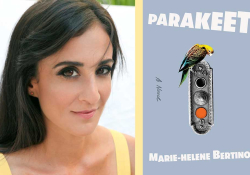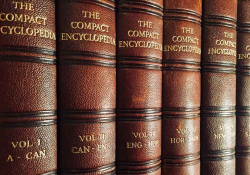A World of Wandering and Potentiality in a Latin American Novel: A Conversation with Gisela Heffes
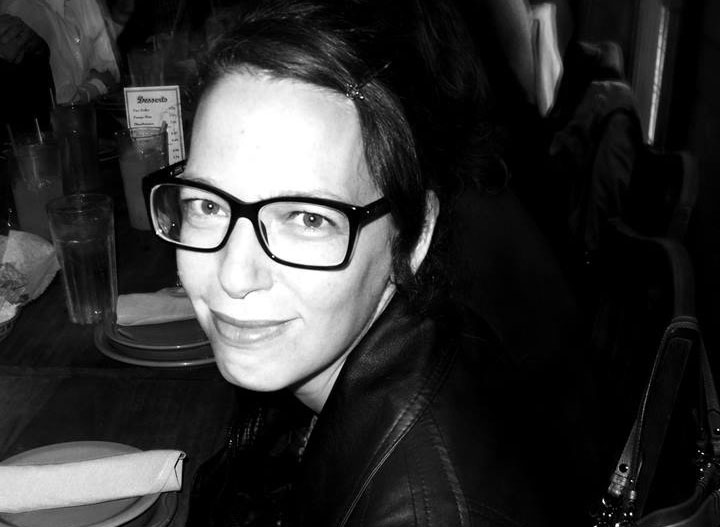
After translating Ischia (2000), the novel by Argentine writer Gisela Heffes, I sat down with her to discuss how the novel—about a young female narrator on a journey of self-discovery and timelessness—fits into the tradition of Latin American and Argentine literature of the twentieth and twenty-first centuries. We also talked about some of the literary strategies she uses as she plays with narrative.
Grady C. Wray: Certainly Ischia is part of an experimental narrative tradition in Latin American and Argentine literature. Could you explain how Ischia fits into this tradition?
Gisela Heffes: Without a doubt there’s an extensive experimental tradition in Argentina and Latin America: from Julio Cortázar and the Boom writers, who are the most well known, to César Aira in Argentina, Martín Adán in Peru, and Clarice Lispector in Brazil, to give a few examples. But without going back too far, in the nineteenth century, even Sarmiento could be called an experimental writer: Facundo is a mix of genres, a text that defies classification. One could say that experimental writing is a significant part of Latin American production. Unlike what we see here in the United States, Latin American writers have more freedom to create without the intervention of a literary agent who would have a big impact and influence on how and what the writers create.
Ischia is an obscene novel that begins with the narration of the long piss of its main character, a novel that mocks everything and doesn’t contain itself when facing established norms, whether literary or cultural.
Ischia falls into that experimental tradition, but I’d also say that it anticipated many of the texts that emerged later in the beginning of the twenty-first century in Latin America, but above all in Argentina. When Ischia came out, the majority of writers still didn’t write with unbridled irreverence. There are exceptions of course, and besides Aira, I should mention Sergio Chejfec or, even earlier, Osvaldo Lamborghini. Ischia is an obscene novel that begins with the narration of the long piss of its main character, a novel that mocks everything and doesn’t contain itself when facing established norms, whether literary or cultural. The language is very porteño (a slang from the city of Buenos Aires) that at times borders on a certain impermeability, becoming almost hermetical. But it is also an intimate novel, funny and sad at the same time, crisscrossed by disenchantment, apathy, indifference, and above all misfortune.
GCW: Talk about how time functions in the novel and how certain sequences happen outside of what most would call “linear” time.
GH: When I wrote Ischia in 1999, what I had in mind was to play with the idea that the story wasn’t happening. I was thinking about a virtual story, a story that’s happening and being told but, at the same time, doesn’t completely happen or wasn’t completely told. Because it’s virtual, or like something that is projected without ever materializing completely, I was interested in the idea that the story was navigating through an imprecise zone between what was probable and improbable, almost on the level of dreams, but with quite a bit of ambiguity.
I wanted to explore this possibility by constructing a narrative that would have to address, among many other things, the problem of time and space. The idea of time and space has always been a mystery. What is the shape of time? How do you come to terms with it? Although time exists, and we’re aware of its existence, it’s also something ephemeral that strangely dissipates. Our perception is supposedly linear, but that’s because we put together a platform and structure around it that gives a precise shape to this strange immateriality that we experience daily; that’s the temporal dimension. In that sense, the power of writing lies in the power to change that structure, take it apart, and break it up. The idea of intervening in that temporal/spatial condition was what initially pushed me to tell the story.
The power of writing lies in the power to change the temporal dimension, take it apart, and break it up.
At the same time, I wanted to show the precariousness of the structure that we perceive as fact but whose materiality can change depending on the extent to which our surroundings also change. Also, I chose the conditional tense to narrate, and by means of this narrative device, what I proposed was to throw readers into an abyss of words, a continuous and excessive verbosity so as to put them in the uncomfortable situation of saying “this didn’t happen” or “maybe it did happen.” It’s a very versatile zone.
GCW: Talking about time, how long did it take you to write Ischia?
GH: I wrote Ischia basically without stopping, in approximately six months. The story just started coming out on its own. I worked on it every day, but most of all I wrote out of an internal need just to get it out. It was an intense experience but at the same time satisfying. What I most enjoyed, besides the pleasure that the act of writing produced, was putting together a temporal and familial genealogy. The familial genealogy reminded me a lot of One Hundred Years of Solitude, where you have to cling to the family tree so you don’t get lost in the passage of time that results from repetition. In the case of the main character, Ischia has six brothers, and all of them are on the edge of finding themselves in a state of abandonment and orphanhood; they are surrounded by innumerable characters. Temporal genealogy in Ischia appears in the journeys the main character takes, including a visit to her own funeral when she dies, which she also makes fun of, only to return to the narrative, alive, at another time.
GCW: You mention Ischia’s journeys, and travel and geographical locations are important in the novel. The characters change their names to places and they travel widely. What does “place” / “travel” mean in this novel?
GH: The idea of travel has many meanings. There is a wandering in the characters, a constant aimlessness, that’s related to the idea of apathy, abandonment, and letting yourself be carried away. The places that the characters traverse are dots on a map of their existences. More than a real place, I was interested in narrating a symbolic space and showing how this wandering marks the relationships of the three main characters, who are also places. They chose to become spaces when they changed their names to the names of real cities. In this sense, not only is what happens to the characters ambiguous, but their own identity, marked by phantom names, intensifies the feeling of ephemeralness and virtuality or potentiality that I referred to before. One of the things that I most wanted to tell was the fragility of these young people, and the idea of travel, of going around the world, or of getting lost in the streets of Buenos Aires or Amsterdam. It also shows that these characters do not have a project, a direction, or a future. Today there are many stories in which the idea of a no-future is present in adolescent characters, but, again, I think that when I wrote this novel, literary production in Argentina was going in a rather different direction. In addition, the idea of place and of places/people continues with the publication of the two other components of the trilogy that begins with Ischia: Prague (2001) and Brussels (2005). But that’s a different story (or two different stories).
GCW: Talk about the names of the three main characters, Ischia, Lara (aka Brussels), and Tomás (aka Prague). Where do these names come from?
GH: Purely from my imagination. I have a fascination with cities, and when I wrote the novel I still had not traveled to Prague or Brussels. It’s interesting, because the following year (the year after I wrote the novel) I applied for a scholarship from the Steven Spielberg Foundation to travel to Prague in the summer, and I got it. In my proposal I explained that traveling to Prague implied traveling to the heart of my character, to meet him, to explore him. I still don’t understand how they could have given me the scholarship with that description. Obviously it moved them. I wasn’t able to go to Ischia, but creating characters from such a distance, like calling them names of spaces and places, was a way of separating myself from them, of distancing myself, and, at the same time, incorporating the desires of the narrative voice, the literary “I” that isn’t the biographical “I.”
GCW: One can read the novel at a very fast pace because of several stylistic traits such as the lack of paragraphs and a certain nod to stream-of-consciousness writing. Was this intentional or did it have to do with the amount of time you took to write the novel?
GH: Many of the mechanisms I used in writing Ischia were put together with the purpose of submerging readers in a concatenation of stories, plots, and itineraries that fluctuated between what was completely out of control and absurd and a state of melancholy and grief. But more than anything, I was interested in and wanted the stream of consciousness, combined with the use of the conditional tense, to create an intensity that took your breath away.
Many of the mechanisms I used in writing Ischia were put together with the purpose of submerging readers in a concatenation of stories, plots, and itineraries that fluctuated between what was completely out of control and absurd and a state of melancholy and grief.
GCW: You manipulate and use a large number of descriptive terms. I’m thinking especially about your description of Fabrizio’s mechanic shop, but also, in other parts of the novel, there are very detailed descriptions of places and agglomerations of terms. The repetition of certain phrases or objects (the red glowing sphere, the Winnie the Pooh mug, etc.) helps readers recall certain characters and their idiosyncrasies. Talk about how you developed these descriptions with such detail.
GH: I spend lots of time listing objects, and these long descriptive scenes offer a materialistic account of a story that it is also very ephemeral. It is probably the need of the main character who narrates the story to relate to these objects and details as way of anchoring herself to something more stable and grounded. But the idea of listing objects or moments or songs is a way of making readers feel uncomfortable as well, of distracting their attention and redirecting it to an accumulation of elements, narrative forms, that—like the story itself—go dancing around any given situation. It’s the opposite of conventional writing, where there’s a certain economy of words, situations, and descriptions. And that is a conscious decision made by the writer. However, I was more interested in developing a strong impulse of accumulation, like the strong temporal impulse that is projected in a plausible time but not necessarily in real time. And overall, I wanted to create these detours from the main story as way of writing from the side, from the margins, of paying less attention to the direction where the story should be heading.
GCW: Continuing to talk about descriptions, your use of smells, music, and colors certainly enhances the reader’s experience. Could you talk more about how you use sensory descriptions in the novel?
GH: When I think about description and how I want the situations to translate, I think about two things: music and visual art. The influence of music is very evident in the novel since the characters spend—or kill—time listening to their favorite bands. There is a detailed description of singers, sounds, and music that contains them and cuts through them. And from there you see the mark of their generation that I mentioned earlier: these characters are not interested in political commitment, national identity, or economic problems. They are interested in having a good time, drinking, getting drunk, and experimenting with drugs. Music is important to them since it frames the experience they’re going through. It also serves as an identity reference for them. Without a doubt, it’s a sign of their generation.
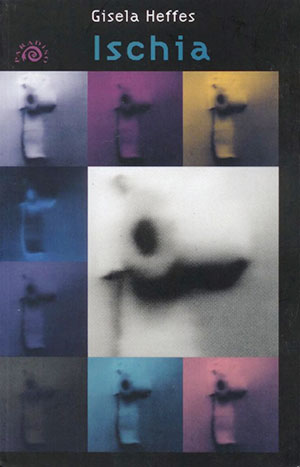 On the other hand, the visual part appears through cinematographic influences with references to, for instance, Jeanne Moreau in Louis Malle’s Ascenseur pour l’échafaud (Elevator to the Gallows) or Paul Morrisey’s movies In Heat and The Band of Outsiders. The allusions to bright, saturated colors is a mechanism that I take from commercial advertisements. From there also come the common places such as Disneyland (and Winnie the Pooh), whose shades are also bright and intense. All these chromatic references are, however, transformed in the novel to some extent. I mean that there is a cinematographic texture that gives the story a sense of intimacy and distance, probably because of the intention I described before of playing with the idea of time and space. Besides the visual allusions there are multiple literary references, such as those referring to Eugene O’Neill, Stendhal, and Cortázar, to give a few examples. The cover of the first edition of Ischia had a very Warholian, pop image taken from the German artist Gerhard Richter (a roll of toilet paper). It’s a very sensorial world, full of extra- and metatextual references, a story that takes place in a universe populated with images, sounds, and colors. That was intentional and is something I’m still interested in exploring: how do you take those senses and words to a limit, go past it, and see what’s there?
On the other hand, the visual part appears through cinematographic influences with references to, for instance, Jeanne Moreau in Louis Malle’s Ascenseur pour l’échafaud (Elevator to the Gallows) or Paul Morrisey’s movies In Heat and The Band of Outsiders. The allusions to bright, saturated colors is a mechanism that I take from commercial advertisements. From there also come the common places such as Disneyland (and Winnie the Pooh), whose shades are also bright and intense. All these chromatic references are, however, transformed in the novel to some extent. I mean that there is a cinematographic texture that gives the story a sense of intimacy and distance, probably because of the intention I described before of playing with the idea of time and space. Besides the visual allusions there are multiple literary references, such as those referring to Eugene O’Neill, Stendhal, and Cortázar, to give a few examples. The cover of the first edition of Ischia had a very Warholian, pop image taken from the German artist Gerhard Richter (a roll of toilet paper). It’s a very sensorial world, full of extra- and metatextual references, a story that takes place in a universe populated with images, sounds, and colors. That was intentional and is something I’m still interested in exploring: how do you take those senses and words to a limit, go past it, and see what’s there?
GCW: The novel deals with some raw, strong, and disturbing subject matter such as suicide, rape, spousal abuse, orphanhood, child pornography, and drug use. Talk about how you approach these issues. How does use of the conditional/potential tense play a role, if any, in the description of these scenes?
GH: In part, your question makes me admit that in the novel, beyond the absurd and hilarious that predominate, there’s a deep sadness that I wanted to narrate, and it identifies a generation. The conditional tense increases the tension with respect to what happens in all those scenes, since the possibility exists that everything that takes place, the horror and suffering, has not really happened, and this ambivalence strengthens the odd sensation that characterizes the story. But above all, whether it happened or not, the characters inhabited a world that is not by far the happiest one. It’s the real world that permeates the wanderings of the characters and their need and search for belonging. Ischia, Prague, and Brussels interact as a family, but a family of a different type. Besides the dysfunctionality of Ischia’s kin family, there is this other refuge, made up of her friends. And throughout the story they become her confidants, her lovers, her adventure, and her comforting companions.
November 2015
Gisela Heffes, originally from Buenos Aires, Argentina, is a writer and professor of Latin American literature at Rice University in Houston. Ischia (2000) is part of her trilogy of novels Ischia, Praga & Bruselas (2005). She has also published Glossa urbana (2012, short stories) and Aldea Lounge (2014, poetic chronicles).
